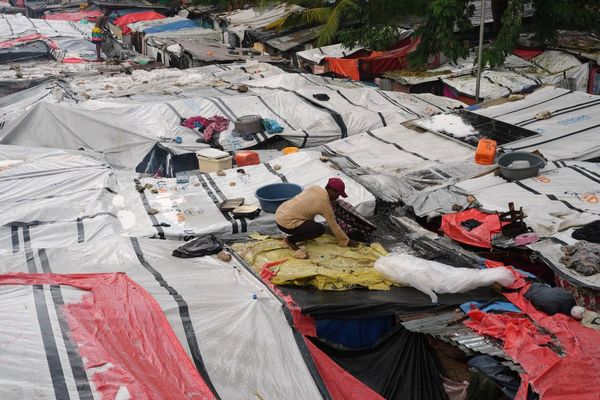
Garden drainage solutions are a must if you live somewhere that is affected by heavy, frequent rainfall. Without necessary measures in place to control water run-off, plots can begin to flood, flower beds can erode, and plants can become ruined.
What's more, puddles on your backyard landscaping ideas, such as decking and paving, can lead to damage, thus reducing their lifespan drastically and upping the need for more regular maintenance. It's a safety hazard, too – no one wants to slip over while trying to enjoy their outdoor living space.
'Owing to changes in climate we have seen a dramatic shift in garden design trends in recent years,' says deputy gardens editor at Homes & Gardens, Teresa Conway. 'As we experience more drastic weather, periods of heavy rainfall and drought, garden designers are having to incorporate solutions to these extremes into their plans.
'Ensuring a garden has sufficient drainage should be the minimum expectation for all backyards, in particular, flood-risk areas. Incorporating creative rain harnessing solutions are a bonus,' she says.

Reduce the risk of flooding with these garden drainage solutions
'Poor drainage in the garden can create problems with being able to grow plants,' says Kody Kettering, landscape and outdoor maintenance expert.
'What we try to do in our designs is make sure we have a good base for the water to move through the garden,' he says.
1. Improve your lawn's ability to soak up rain
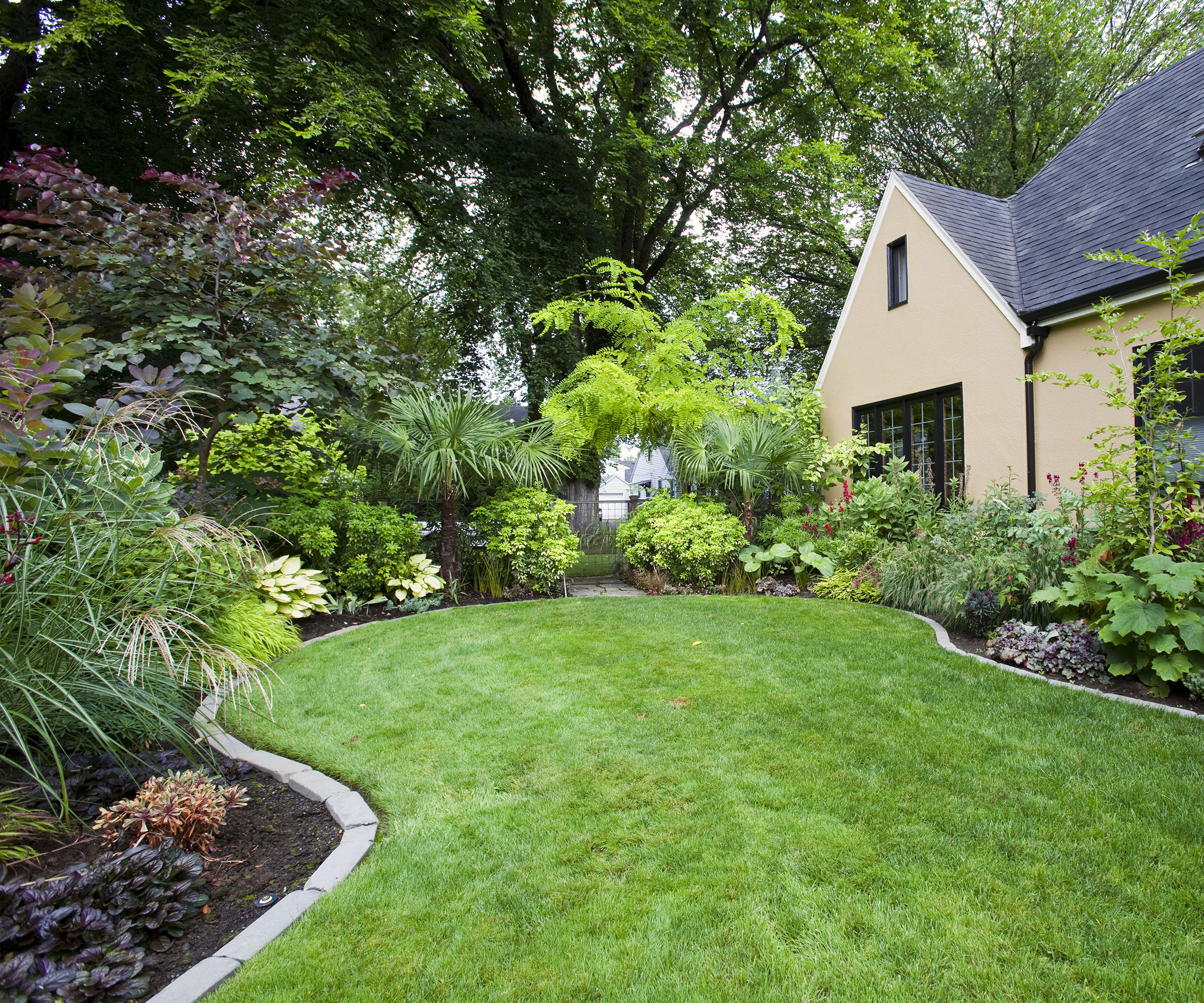
A boggy lawn is every gardener's woe. Excess water will compact the soil and drown the grass, leaving a muddy stretch of brown in place of luscious green turf. There is, however, a way to avoid this mishap.
David Hedges Gower, a lawn care specialist, suggests ensuring you have a lawn care plan in place that includes how to aerate a lawn. 'Aeration will allow the best chance for your lawn to survive if you have flooding,' he says. It will ensure there is adequate space in the soil beneath your lawn for soaking up as much water as possible.
However, for the best results, you need to ensure you're doing the right type of aeration. 'Adding a fork into a soil profile will not change its soil structure and therefore will rarely improve anything for more than minutes,' he says.
Instead, use a plug aerator. Try this Jardineer Plug Aerator Lawn Tool at Walmart. There is no need to remove the plugs afterward – they will break back down naturally into your lawn's surface.
David also warns against artificial grass if you live in an area prone to floods. 'Fake grass, together with its matting and installation substrate, cannot percolate heavy rainwater as efficiently as natural turf,' he says.
2. Install decking with rainfall in mind
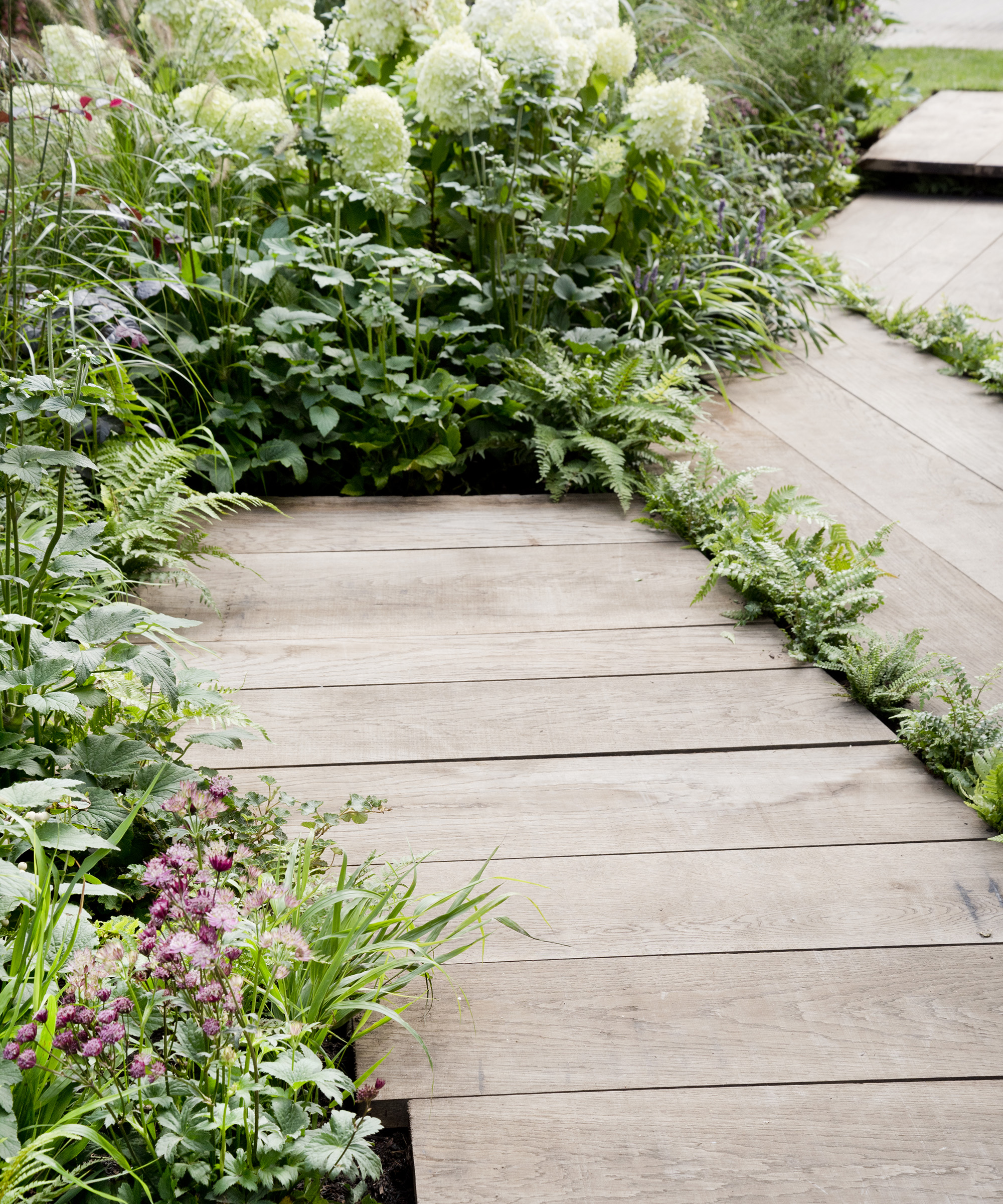
Without proper garden drainage solutions, timber deck ideas can be prone to rot, the likelihood of mold is increased, and the shape and finish of the structure can become distorted. What's more, pooling water beneath your deck can erode soil, harbor bacteria, and encourage insects such as mosquitoes.
When building a deck, ensure there is adequate spacing between each board to reduce the risk of puddles forming on the surface. Beneath your deck, apply flashing as a moisture barrier, and for ultimate protection, a drainage system.
Look for products that will keep water safely away from the joists, beams, and the exterior of your home. It can be as simple as corrugated plastic sheets, but you'll want to ensure they are water-tight.
Alternatively, install a sloped, non-permeable surface below your deck that will drain water away from your home in a controlled manner.
3. Incorporate drainage into patios
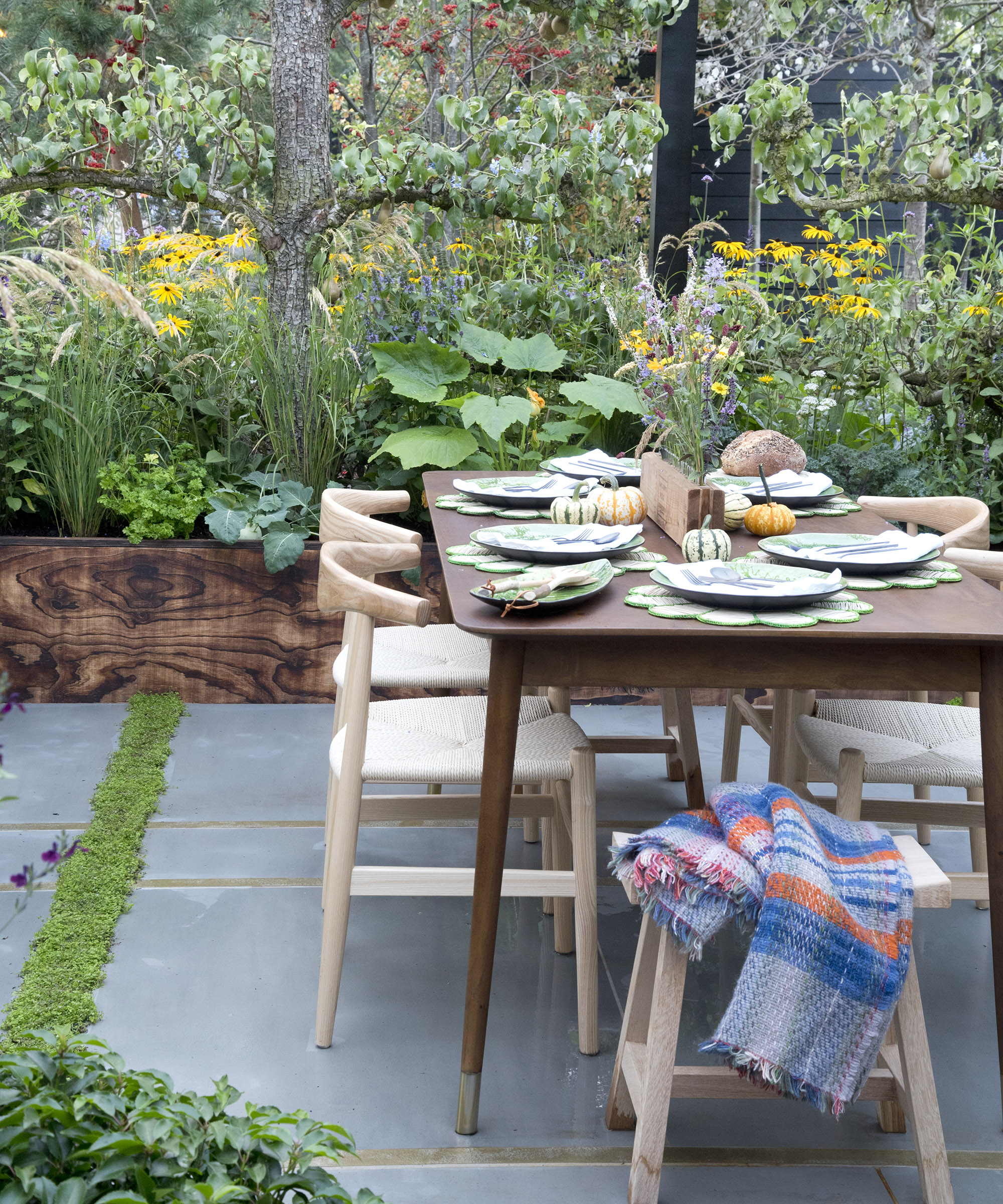
No one wants their patio ideas to be covered in puddles, which is why it's important to add garden drainage to your outdoor living space.
One of the most effective approaches is installing drainage channels, which can provide a solution for patios and driveway design, including areas around garages and conservatories.
Water from the drainage channels can flow into a storm drain or soakaway. Soakaways are a pit in the ground, usually filled with gravel which allows water to slowly soak through to the soil.
Another option is to use permeable paving, or opt for a gravel patio – both of which will reduce the likelihood of standing water on your space. Don't forget about the impact of a slight slope, too, which can help drain rainwater run-off into nearby flower beds or other drainage areas. This is especially prudent if you want to design a patio from scratch.
4. Improve the soil structure of your flower beds
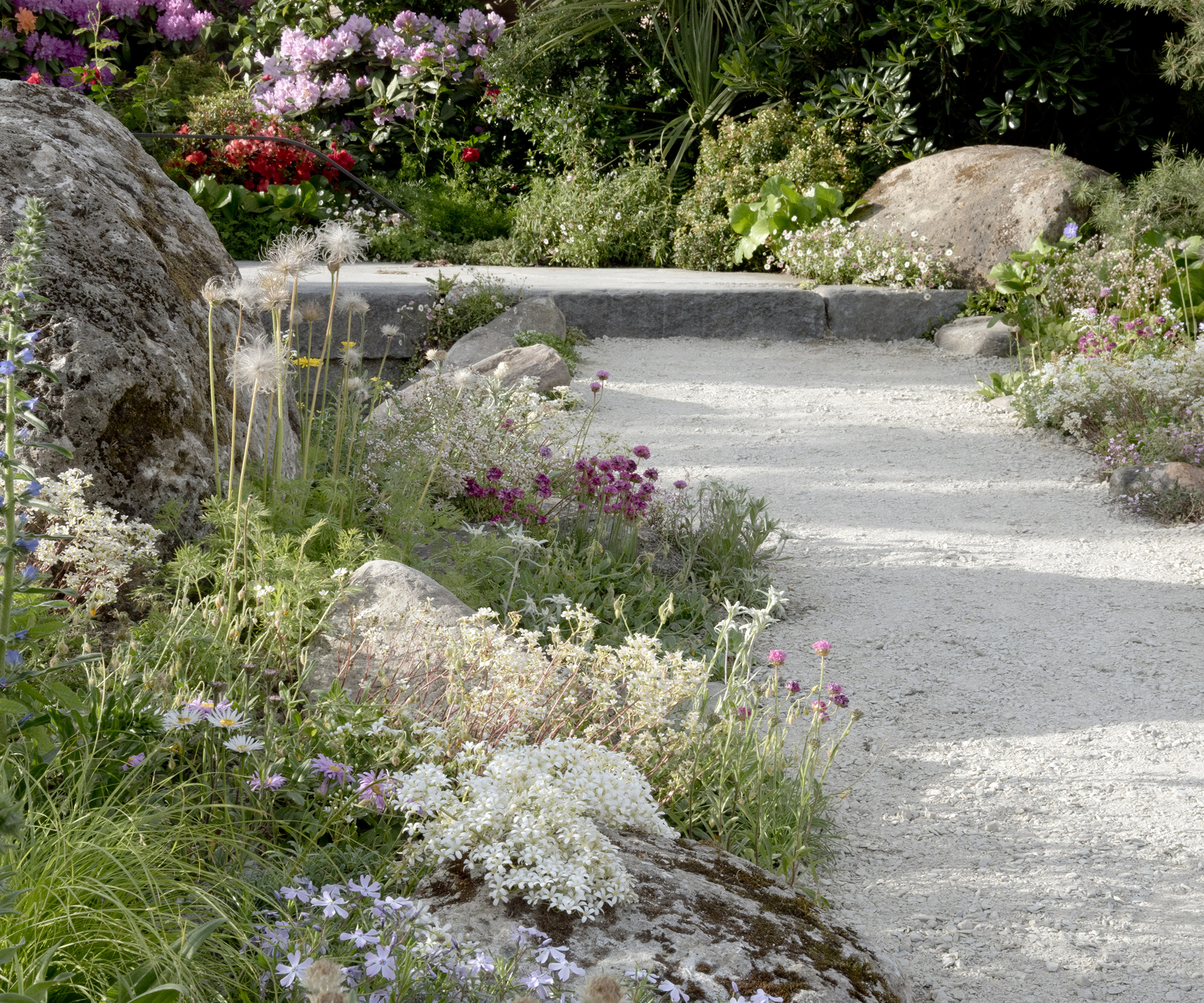
Digging over the soil to incorporate grit will aid drainage in planting beds. Applying organic matter will also improve the soil structure of your flower beds and borders, as will adding a balanced fertilizer in spring, followed by a layer of mulch over the root area.
If you get lots of rain in your region, you may want to swap out borders for raised garden beds instead, as they tend to be better for drainage and the soil structure is easier to control.
There are also plenty of plants for wet soil, so if you want to reduce the risk of damage, opt for these in areas prone to water retention.
5. Get creative with rain gardens
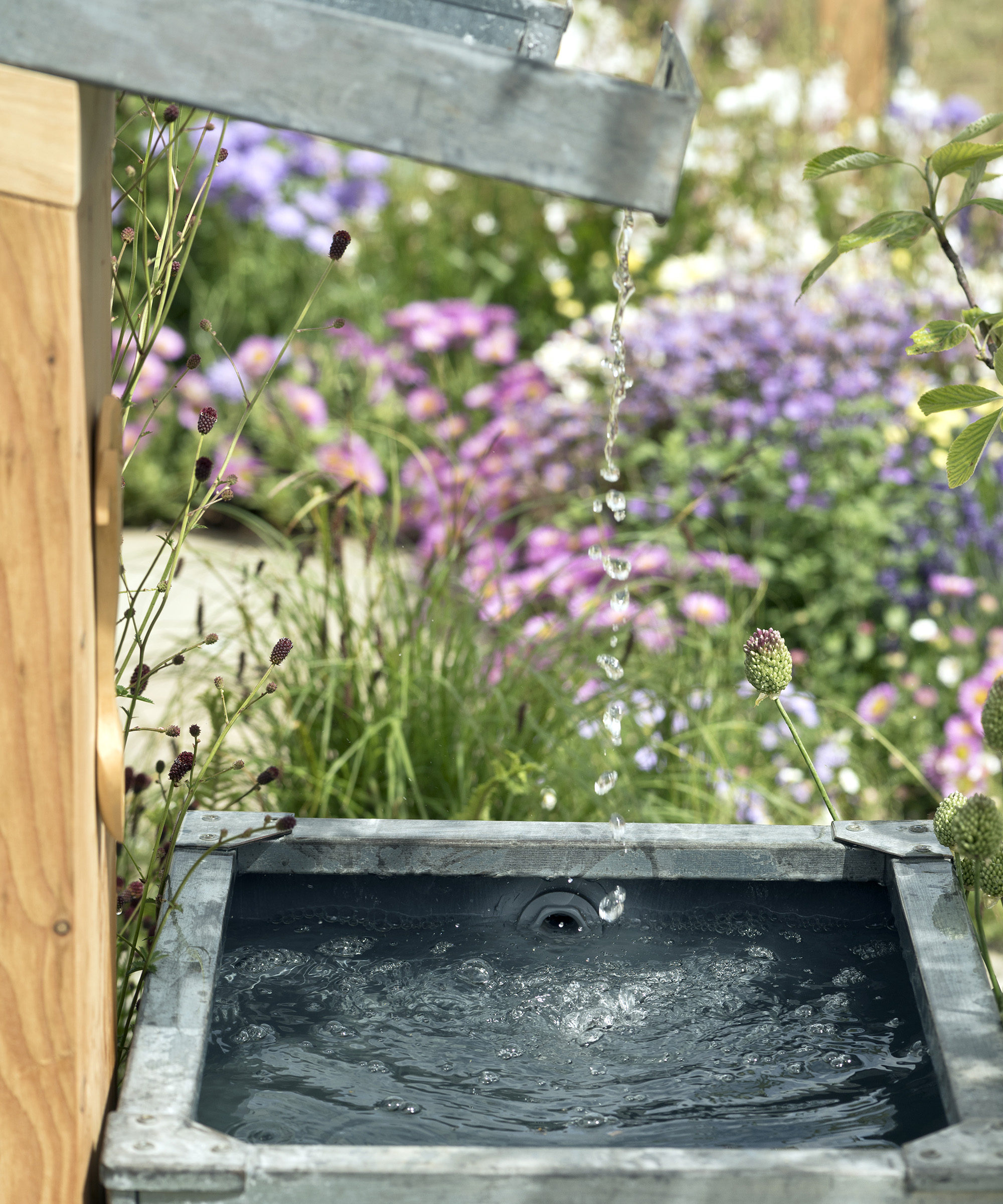
Don't forget there are plenty of creative ways to incorporate garden drainage ideas into your outdoor space.
Green roofs, for instance, will help to absorb rain thus reducing run-off. They look beautiful too, and are wonderful for visiting wildlife.
Other elements that can be included are water butts – ideal if you're looking to create a more sustainable garden. Plus, there are other linking elements that can be added to channel rainwater around your plot towards a dedicated rain garden (a shallow, dug-out dip in the ground, often filled with suitable plants, made for soaking up water). These include rills, rain chains, and small ponds.
FAQs
What should you do with a garden after it has flooded?
If your garden has already flooded, there are a few things you should do (alongside incorporating the above tips for next time a storm comes around, that is).
Collect up any debris and ensure that storm drains aren't blocked. It's also a good idea to wash down hard surfaces, such as paving, to remove any lingering pollutants.
A pressure washer will come in useful for this. Wear gloves and protective clothing while you do so.
In terms of your lawn, keep off the grass. Walking on it while it is still waterlogged will only worsen conditions.
If your kitchen garden has flooded, unfortunately it's best to discard edible crops close to harvest as they may no longer be safe to consume. Avoid growing salads and other raw veg for two years after flooding in case disease spores remain in the soil. It should be safe to grow cooking veg after just one year.
It may sound surprising, but after a waterlogged period, it's crucial to water your garden thoroughly in dry spells. This is because the plants will be more susceptible to drought stress.
If your garden floods it's one thing. But if inclement weather has caused your interior to flood, then you might find our guide on how to prevent mold after a flood useful.


